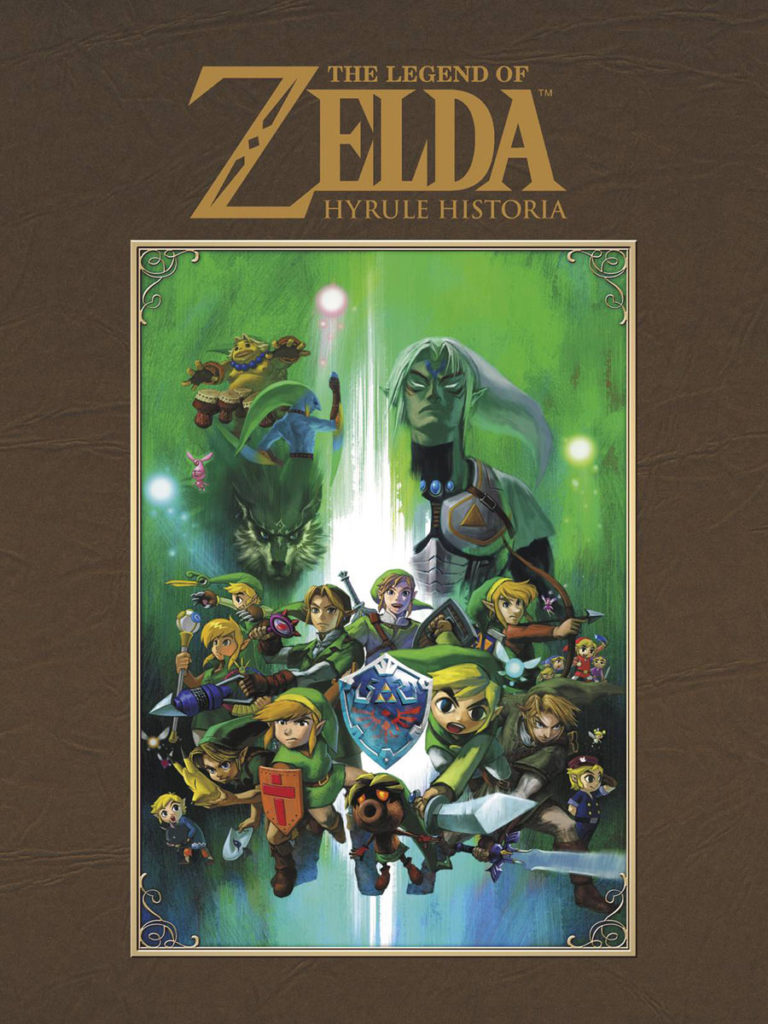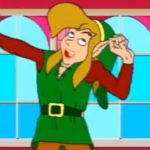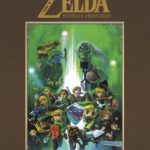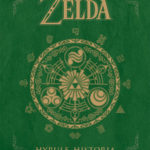“It’s the Legend of Zelda, and it’s really rad. Those creatures from Ganon are really bad. Octorocks, Tektites, and Leevers too, but with your help our hero pulls through.” With those words a generation of children were introduced to one of the most venerable video game franchises of all time (and yes, even with the outdated slang, it IS rad). Over course, over the 25 year history of the series, the Zelda Universe has continued to grow unabated. Now, just days after the newest Zelda title for the Wii U was teased, Nintendo-philes everywhere are finally able to get their hands on what is sure to become the definitive piece of Zelda merchandise, The Legend of Zelda: Hyrule Historia, brought to these shores by the fine folks at Dark Horse Comics.
While this is ostensibly a review, I have to say right off the bat, if you like the Zelda series at all… BUY THIS BOOK. Really, you don’t need to tell me to tell you that. Hyrule Historia has the prestigious honor of being the #1 book on Amazon, unseating Fifty Shades of Grey, and this was just for pre-orders! So yes, you’ll want this tome, but for the sake of my wanting to gush over it, here’s the lowdown.
At first glance, Hyrule Historia is a glorified artbook. This is very untrue. While it does function as an artbook, it is so much more. The book is broken into many distinct sections. First, we’re treated to a retrospective on the series’ history by someone who should know, Shigeru Miyamoto. If you don’t know who he is, just think of him as to Nintendo what Stan Lee is to Marvel or Osamu Tezuka is to manga, you’ll get the idea.
After Miyamoto’s introduction, there is an extensive collection of Artwork from The Legend of Zelda: Skyward Sword, the most recent entry in the series on the Wii. Not only does this have official character artwork and the like, but also design evolution for all of the main characters in the game, and even some unused artwork. If this section was sold as a standalone book, it’d still be worth the price.
In the middle of the book, is the main selling point: the official timeline of the Zelda series. As many die-hard Zelda fans can tell you, this information has been public ever since the original Japanese language version of the book came out in 2011. Don’t think that you have all of the information though! There is a great introduction that explains how the timeline works and what games are included. No, not every Zelda game is included in the timeline, but honestly, the ones left out aren’t “real” Zelda games anyway.
“Gee, it sure is boring not to be included in the official timeline!”
While the timeline itself is contained on a single page, the actual events of the timeline are spelled out in glorious detail over the next 70 pages or so. If you ever wanted to know why the names Link and Zelda are passed down throughout the ages, as well as stuff like how the Hero’s tunic become such mainstays, this is what you’re going to want the book for. It’s painstaking, yet never overbearing, and I could pore over it for hours and indeed have. That being said, being a comprehensive timeline, it does spoil the plot of every game and their potential outcomes. Buyer beware if that’s a deal breaker, though that’s a silly reason not to pick up such a treasure trove.
You’d think after the timeline, Hyrule Historia would have exhausted its content, but you’d be quite wrong. We have another art section, this time treating us to artwork from every game in the series in chronological, rather than timeline, order. One of the few knocks I give Hyrule Historia is the lack of artwork for some of the older games in the series. Still, what is there is great, and much of it hasn’t been seen anywhere before. You also have to hand it to the people at Nintendo who literally scoured their archives looking for all of this stuff. The effort is appreciated.
After the art-fest is done, there is a handy breakdown of every game in the series, and what consoles said game is available on. This is very handy if you want to play a particular game, but don’t have access to an original NES or Game Boy. Even rarities and offshoots are detailed such as Link’s Crossbow Training, and the Japan only BS Satellaview Zelda titles.
As the book winds down, we’re treated to closing remarks from Eiji Aonuma, the series director/producer for the Zelda games from 1998 on. What he has to say is very interesting. You don’t normally expect someone in the industry to be so candid about how the games are developed. Oddly enough, the story can almost be considered an afterthought, due to games having to be about, well, the gameplay first and foremost. It’s definitely something to think about, and a testament to how hard the team at Nintendo works to make the timeline as consistent as it is!
Finally, the book closes with an amazing Zelda manga tale by Akira Himekawa. It ties directly into the story of The Legend of Zelda: Skyward Sword and serves as the true origin of both Link and Zelda. The artwork is breathtaking, and the way the story weaves itself into the larger tapestry that is Zelda is masterful. In fact, the only gripe I have about the manga will be irrelevant to most people. It is ever so slightly annoying that Hyrule Historia is laid out like a western book, reading left to right, and then the manga hits you in its native right to left format, meaning you reach the end of the story if you’re reading the rest of the book “normally”. Again, that’s barely a complaint, just me being nitpicky. There’s really no way this book could any less flawless.
So there you have it, this book contains everything a fan of Zelda could possibly want, and more. The highest kudos available to the team at Dark Horse comics for bringing this book to North America. Check out the preview gallery below and buy your own copy here!






